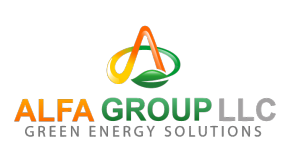Comparison
The Plasma Gasification Solution offers the potential for increased revenues, reduced operational risks, and superior environmental performance when compared to other technologies. We are the sole company with commercial reference facilities.
Comparison to Incineration
The table below outlines the numerous advantages of gasification technology over incineration for the treatment of MSW.
|
Gasification Technology |
Incineration |
|
|
Feedstock Flexibility |
Ability to mix feedstocks such as:
|
MSW and other common waste streams |
|
Fuel Created |
Syngas (Carbon Monoxide and Hydrogen) |
Not applicable |
|
End Product Opportunities |
|
|
|
Overall Plant Efficiency |
Combined Cycle Process: 1 tonne of municipal solid waste is capable of creating 1000 kWh of power via combined cycle configuration |
Steam Cycle Process: 1 tonne of municipal solid waste generates between 500-650 kWh of power |
|
Emissions |
Combined Cycle Process:
|
|
|
Dioxins and Furans |
High operating temperature (>1000°C) in conjunction with an oxygen starved environment destroys any dioxins/furans that may be present in the feedstock, and eliminates the potential for the creation of dioxins/furans. Rapid syngas cooling via water quench prevents de-novo synthesis of dioxins and furans. |
The presence of oxygen, chlorine, and particulate creates the right conditions for the formation of dioxins and furans. |
|
Byproduct |
Inert, non-hazardous and non-leaching glassy slag salable as an aggregate building product. Most particulate recovered during cleaning of the syngas is recyclable. |
Hazardous fly ash and scrubber residues plus incinerator bottom ash |
Comparison to Other Plasma Gasification Technologies
|
Gasification Technology |
Other Plasma Technologies |
|
|
Commercial Reference Plants |
Three commercial references. Two others under construction. |
Most have no commercial reference plants. |
|
Operational Experience |
Greater than ten years |
None, except that some competitors have experience at small demonstration plants |
|
Demonstration Plant |
Yes, up to 24 tpd |
Some competitors have a demonstration plant. Some are at lab scale. Some do not have a demonstration plant. |
|
Plasma Gasifier Design |
Simple single vessel design |
Most competitors employ a multi-step design. |
|
Plasma Torch Technology |
30 years experience. |
Must be purchased. No expertise in plasma torches. |
|
Scale |
Up to 1000 tpd in a single vessel. Continuous feeding. |
Up to 150 tpd for some competitors. Some competitors use batch feeding. |
Comparison to Non-Plasma Gasification Technologies
|
Gasification Technology |
Non-Plasma Gasification Technologies |
|
|
Syngas Quality |
Tar free syngas suitable for clean-up to specifications required by gas turbines, reciprocating engines, liquid fuel technologies and fuel cells. |
Syngas must be immediately combusted before being cleaned. |
|
Feedstock Flexibility |
Ability to mix feedstocks such as:
|
Limited ability to process waste streams other than MSW.Lower temperatures limit feedstock flexibility |
|
End Product Opportunities |
|
Power via Steam cycle Process Steam |
|
Byproduct |
Inert, non-hazardous and non-leaching glassy slag salable as an aggregate building product. Most particulate recovered during cleaning of the syngas is recyclable |
Similar to incineration – hazardous fly ash and scrubber residues plus bottom ash. |


